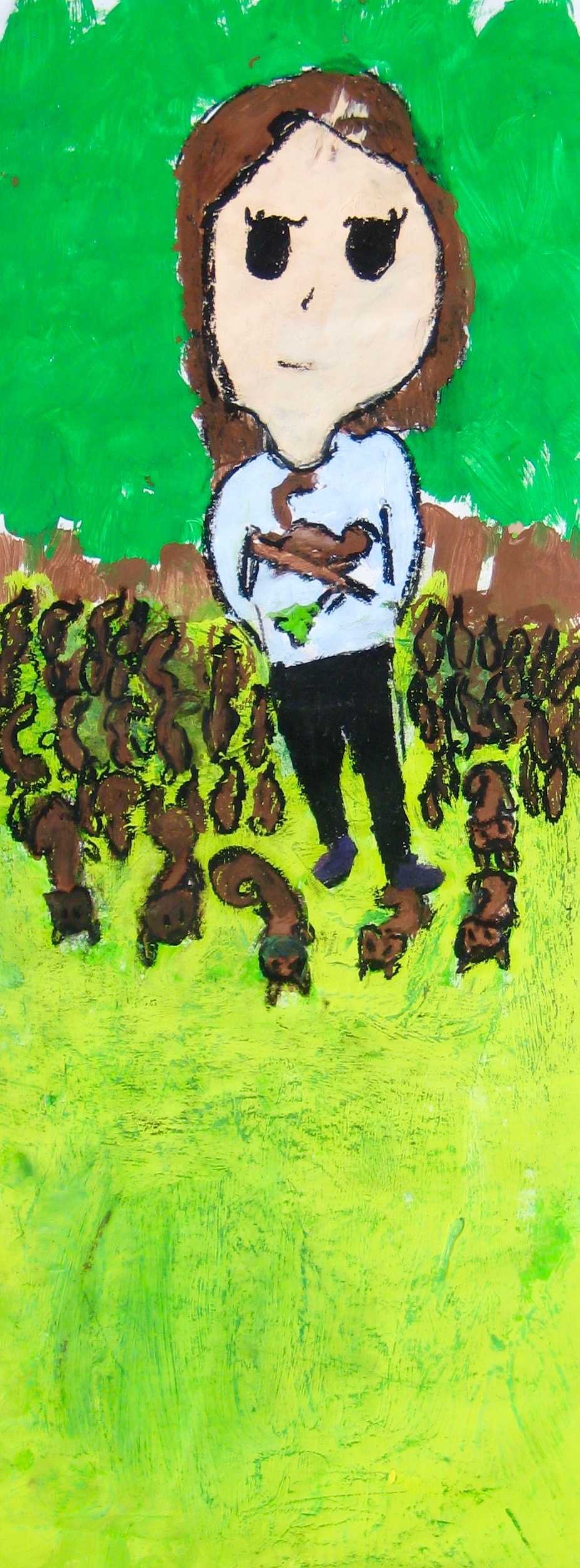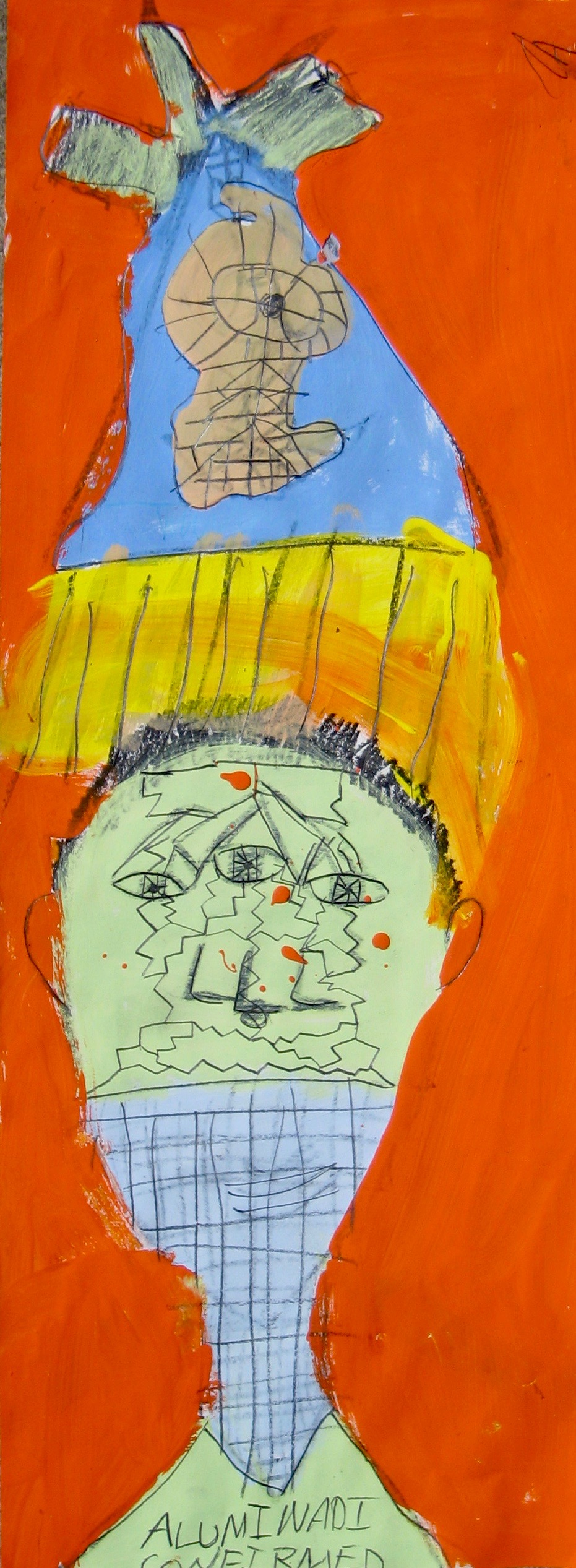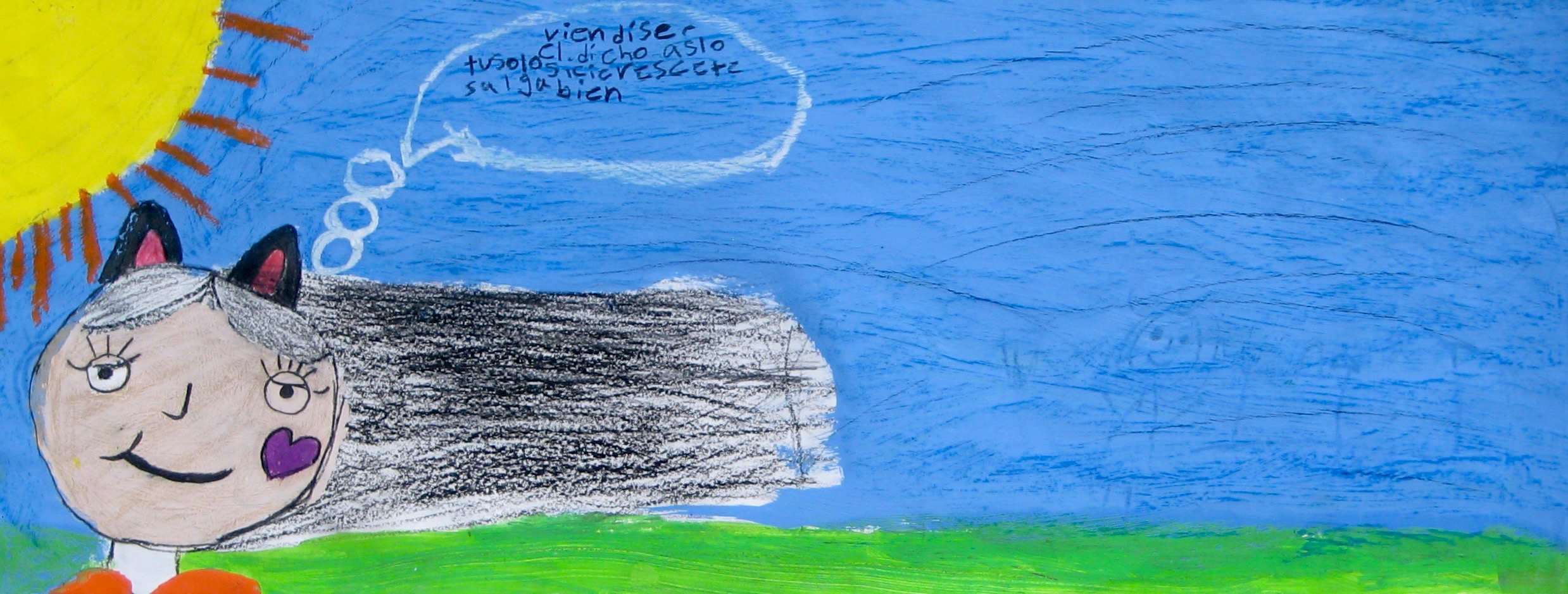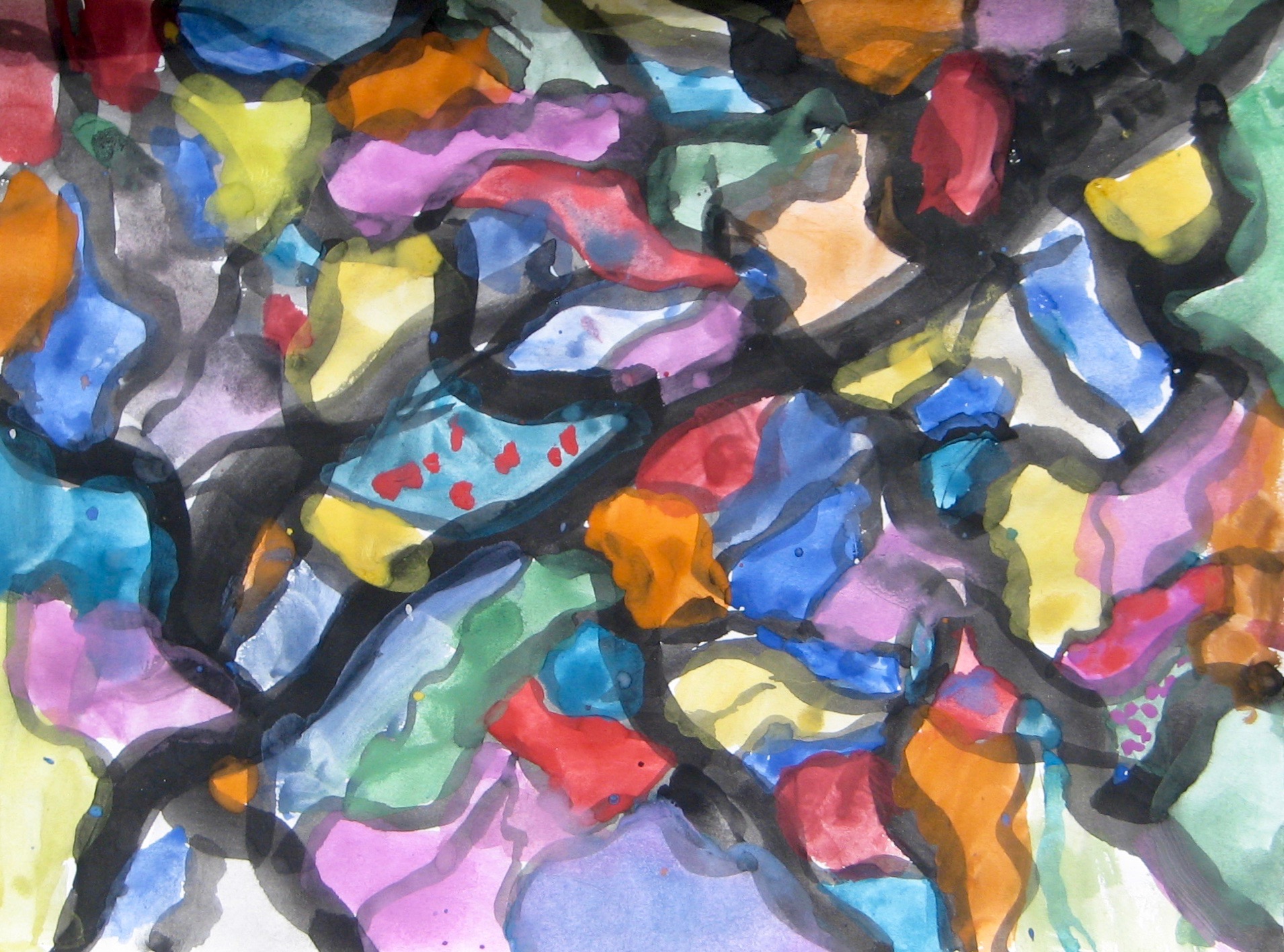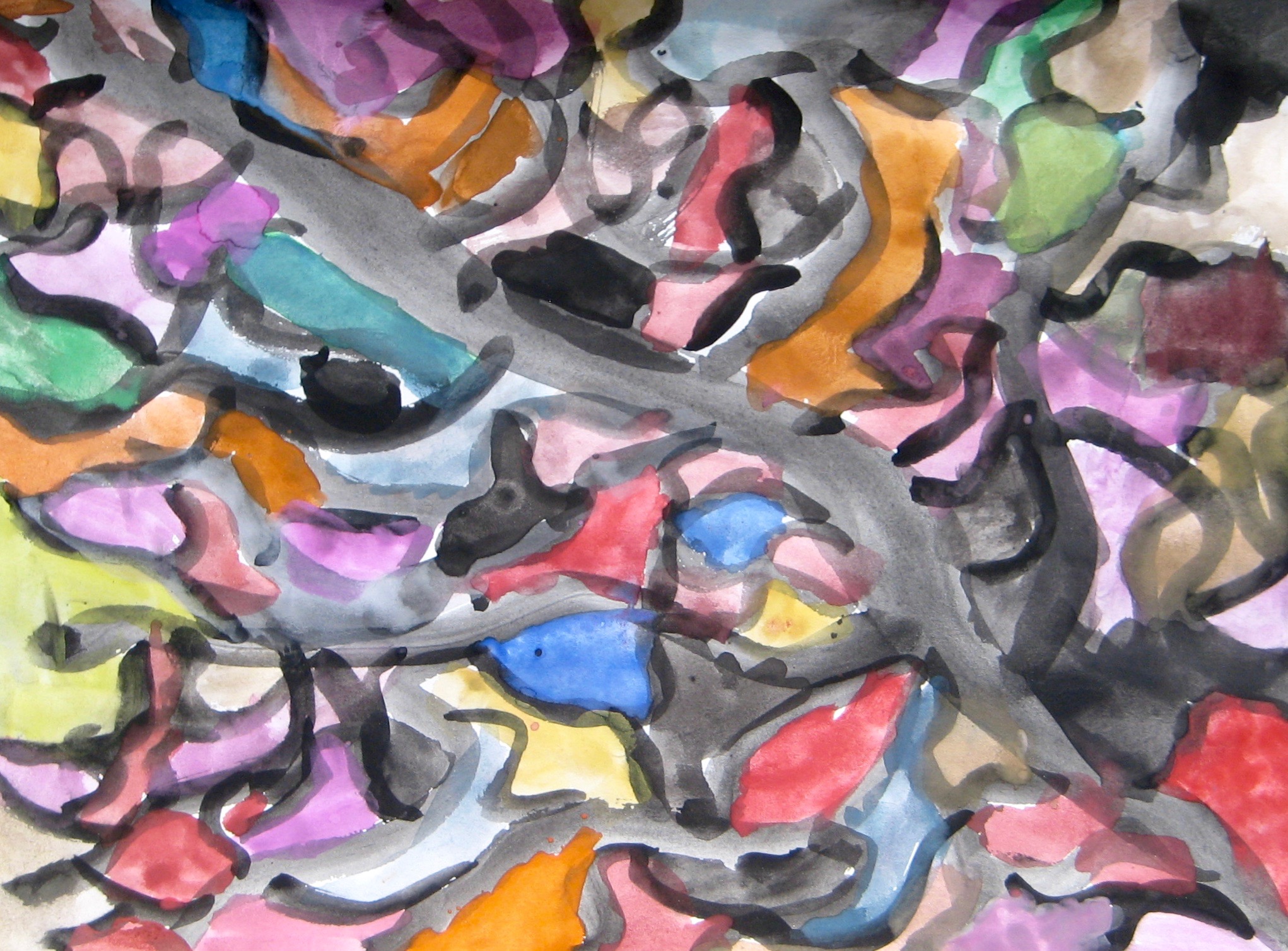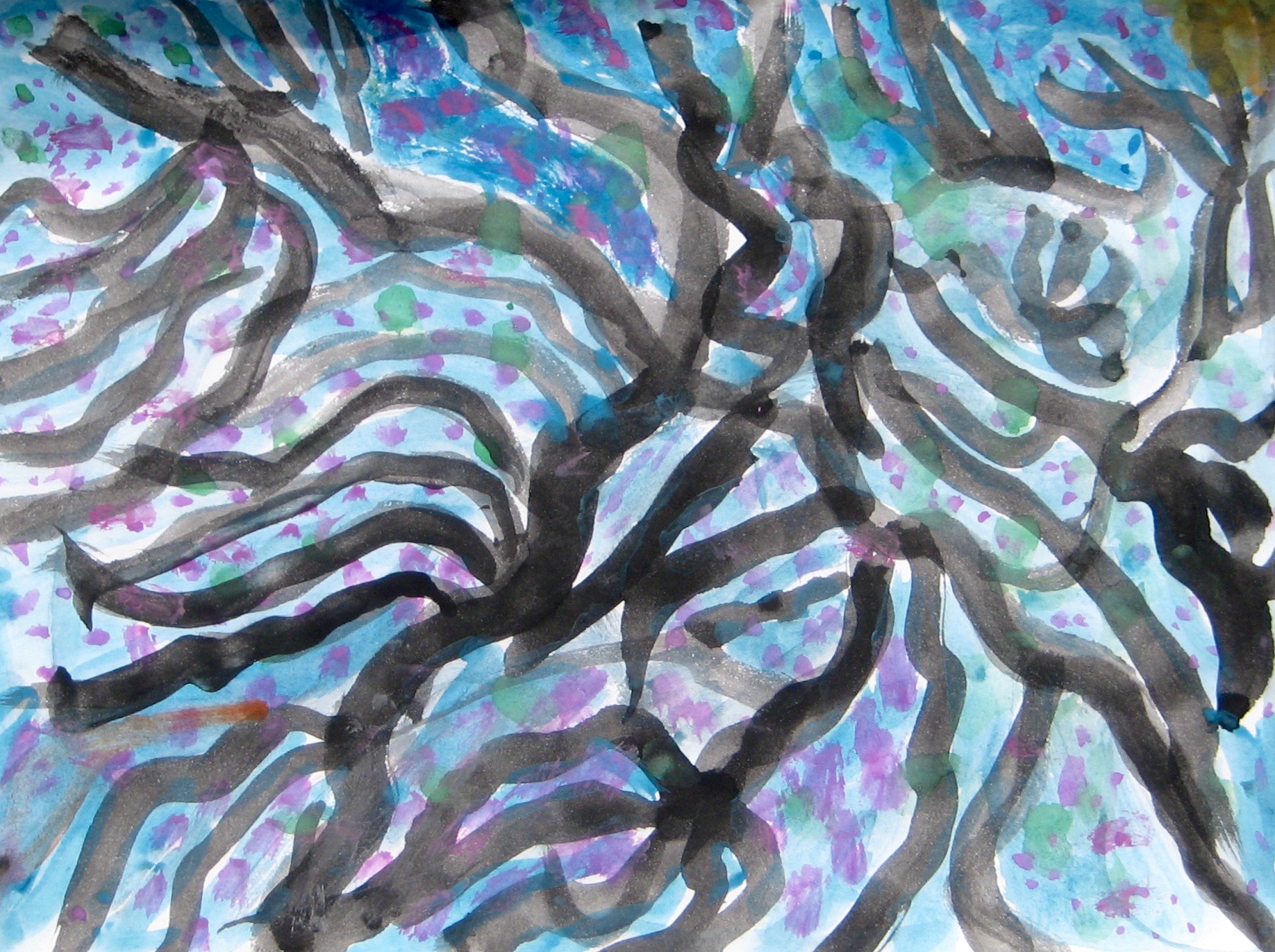Portraits
Tempera under-painting on white paper, worked with students' choice of a variety of drawing materials
Last spring, grades 3 - 5 worked on portraits in various mediums, including tempera paint. (Click here to see grade three examples.) As a continuation of that work, grade four and five students began the year with a portrait painting.
The starter was to draw a portrait (the portrait could be realistic or fanciful, human or animal) with black oil pastel on oblong paper. I gave students the oblong paper to give them a problem to solve--how do you fill the odd oblong shape with a portrait and a background?
Students then used tempera paint to cover the entire surface. The brushes were big, the paint thick so I suggested that students think big, bold and colorful and to not worry about small details during the painting sessions. The details were added in a final work session with a variety of materials: oil pastel, crayon, colored pencil stick, pencil, and black marker.
As students worked, I encouraged them to go with what was happening in the work, as can be seen in the painting on the left: the drawing of the face disappeared under a bold and colorful abstract pattern.





